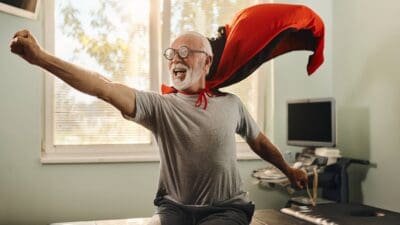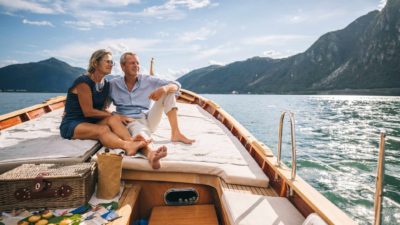About 710,000 Australians intend to take up retirement over the next five years, according to the Retirement and Retirement Intentions report published by the Australian Bureau of Statistics (ABS).
There are currently 4.2 million retirees in Australia. Most people entering retirement today are baby boomers, who were born between 1945 and 1964.
The youngest of this cohort is 60 years old. This means all baby boomers have reached their preservation age for access to superannuation. So, they can now access a lifetime of savings — and plenty are doing so.
New figures from the Australian Prudential Regulation Authority (APRA) show a significant surge in superannuation benefit payments over the past year as this wave of retiring boomers rolls through.
Baby boomers can also access the age pension once they reach their 'retirement age'. For this generation, the retirement age ranged from 65 years and six months to 67 years, depending on the year of birth.
Gaining access to funds is the number one factor prompting Australians to retire, according to the ABS.
In FY23, a government pension or allowance was the main source of personal income at retirement for 43% of retirees. This was followed by superannuation, an annuity, or a private pension at 27%.
Many retirees also have investments outside superannuation from which they derive other forms of income, such as dividends.
How much money do you need for retirement?
According to the AFSA Retirement Standard, couples need about $690,000 in superannuation by retirement age, plus a part-pension, to have a comfortable retirement lifestyle.
The Association of Super Funds of Australia (ASFA) defines a comfortable lifestyle as money for life's essentials plus private health insurance, many exercise and leisure activities, occasional restaurant meals, a domestic holiday every year and an overseas trip every seven years.
AFSA estimates that a comfortable lifestyle costs $72,148.19 per year.
Single retirees need $595,000 in superannuation and a $51,278.30 budget to have a comfortable retirement lifestyle.
A 'modest' retirement lifestyle is cheaper.
It requires both singles and couples to have $100,000 in superannuation at retirement, plus a part pension, to cover annual living expenses of $46,944 for couples and $32,666 for singles.
AFSA's estimates assume you own your own home without a mortgage. They also assume that you draw down all your superannuation capital and invest it with a 6% return per annum.
What about investments outside superannuation?
A Findex study shows 85% of Australians are investing in assets like shares and property outside their superannuation fund.
The study showed baby boomers preferred to invest in bank savings (60%), property (50%) and shares (46%).
The Motley Fool guide to retirement planning
The Motley Fool has a comprehensive retirement planning guide to help Australians save and invest to create a fantastic life of leisure once they stop working.
One investment option is to build a portfolio of reliable ASX dividend shares for retirement.
The aim is to create a strong stream of passive income derived from fully franked dividends.
It's up to you to decide which stocks are best for your long-term retirement objectives.
Super Guide has revealed the 20 most popular ASX shares held by self-managed superannuation funds (SMSFs). This provides some insight as to which stocks some of your fellow retirement savers prefer.
The top five stocks listed below all pay fully franked dividends.
- BHP Group Ltd (ASX: BHP) shares (48% of SMSFs holding ASX shares are invested in BHP)
- Woodside Energy Group Ltd (ASX: WDS) shares (45.6%)
- Westpac Banking Corp (ASX: WBC) shares (40.9%)
- Commonwealth Bank of Australia (ASX: CBA) shares (39.1%)
- National Australia Bank Ltd (ASX: NAB) shares (38.9%)
New research just released by superannuation provider Vanguard reveals more SMSFs are putting money into exchange-traded funds (ETFs) these days.
ETFs provide handy diversification of stocks in a single trade.







